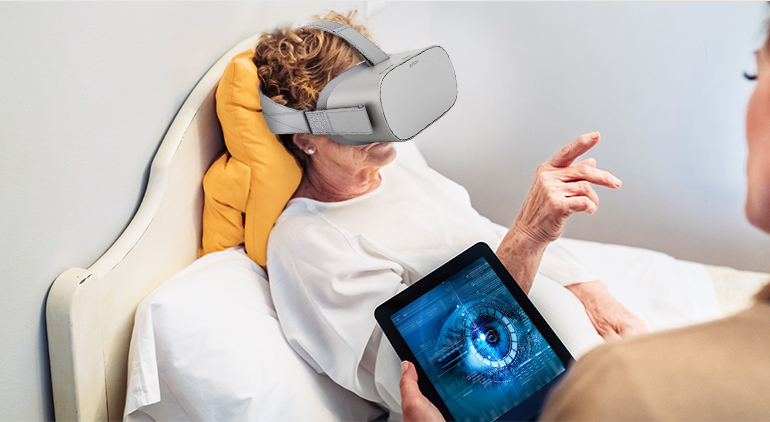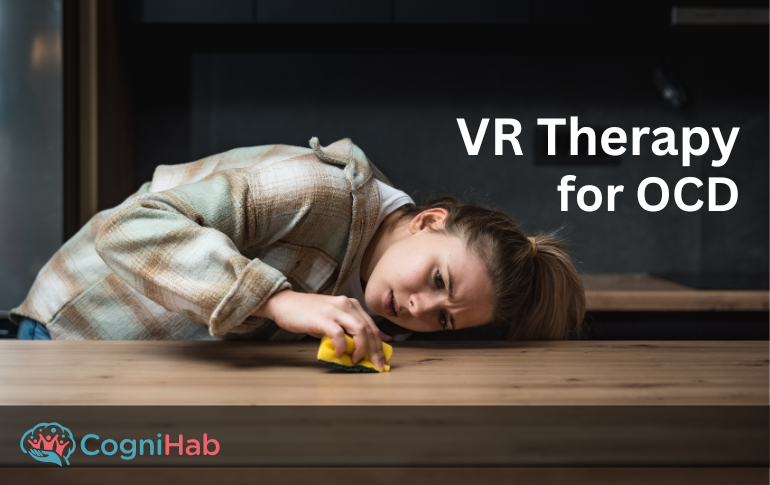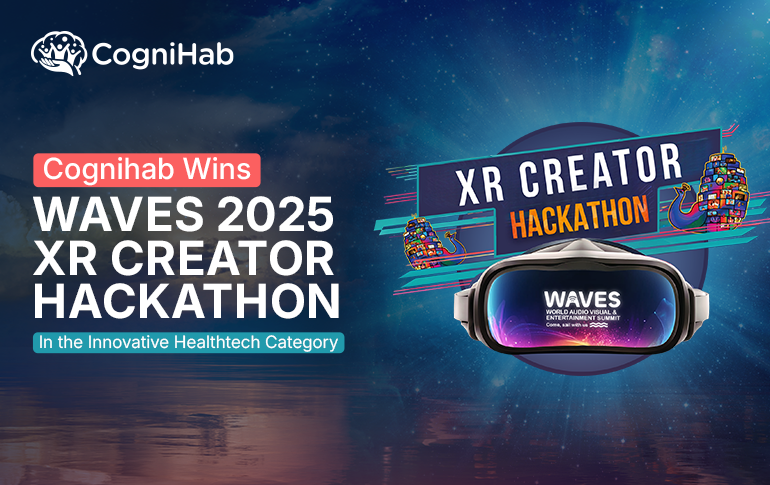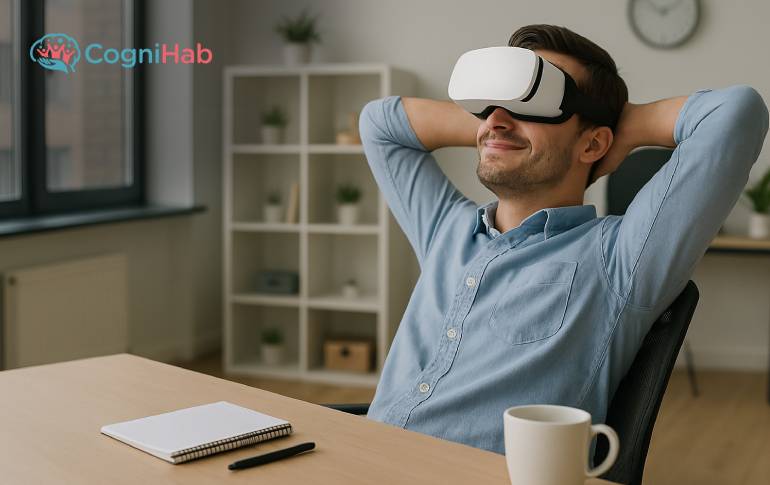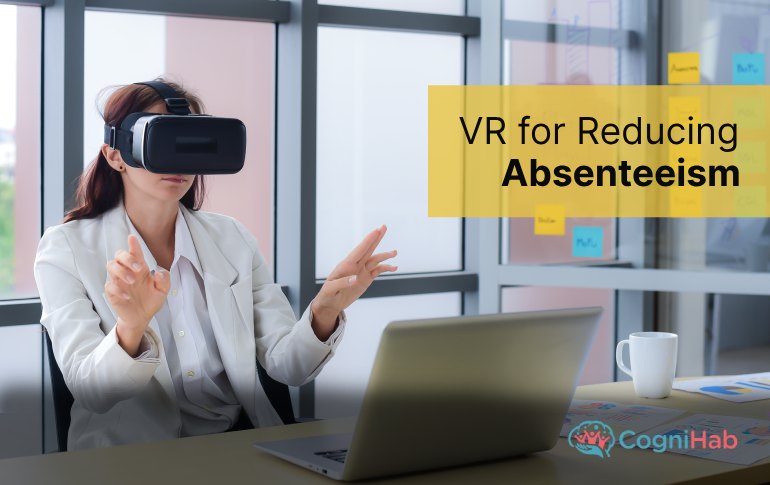7 Reasons Why Virtual Reality Vision Therapy is Effective
Imagine seeing a video in the lowest quality possible, and then switching to the highest quality possible. There’s a world difference there right!
That is what our brain pictures when viewed through an imperfect eye and when viewed through 20/20 vision respectively. Therefore virtual reality vision therapy is adopted by the patients to try and remove the blurriness due to their vision problems.
Right now, one of the most interactive and fun ways to do vision therapy is with Virtual Reality.
Virtual reality experiences take you to an unreal world where you can train your eyes to see better, and perform eye exercises in a safe and fun environment. It also reduces the chances of taking prescribed drugs and putting on corrective lenses.
VR healthcare solution providers around the world have created various modules to tackle these problems such as a vergence accommodation VR module, VR amblyopia module, VR diagnosis module, and regular eye exercise in vision therapy module.
Let's explore the top 7 reasons that are proving virtual reality as an effective solution for vision therapy.
1. Versatility
The traditional methods and also, most of the methods being used these days confine the patients to a certain degree.
For diagnosis or for treatment, the patient has to visit the doctor’s office and sit in a designated area, where the medical equipment is placed which makes it unsettling for the patient.
With the emergence of Virtual Reality, the patient can be sitting, standing or he can freely move around. This leads to an increase in his comfort level and in turn reduces the stress in his body.
2. Cost Saving Solution
The VR headsets in comparison to the medical instruments used for diagnosing or for treatment of the eye are significantly affordable.
These VR headsets require your smartphone as hardware to run an application and are loaded up with software that can be downloaded from the app store online reducing the chance of any hassle.
Taking the comfort of the patient in mind, he can perform a variety of exercises in the comfort of his home. This also reduces the cost of him driving to the clinic, the hassle of booking the doctor’s appointments.
3. Personalization
If the treatment caters to a particular individual’s needs, then there are high chances of improvement or better treatment for that individual. VR is an effective tool that caters to an individual’s needs.
For example, the object has to be seen at a distance of 30 meters or at 12 meters from the eye or the object has to be seen 5 meters above the ground or 2 meters above the ground, these solutions are provided as a convenience in Virtual Reality.
These modifications automatically happen when the patient progresses in a virtual reality game.
4. Accommodation
Accommodation is a condition wherein people have trouble keeping focus when the eyes shift from a far image to a nearby image. For example, if a person is seeing an object far from his eyes and is asked to quickly shift his eye-sight to a nearby object, he may have trouble picturing it i.e. the picture may appear blurry.

To make the person adapt to seeing things clearly, the person is asked to perform the exercise in VR (mentioned in the example) repeatedly and if the repetition of the exercise doesn’t work, the object size can be made bigger, the distance of the object can be managed and the contrast of the image can be changed.
All these modifications are just a button touch away in VR.
5. Virtual Reality Depth Perception
Depth perception is a condition of the eye, where the person has difficulty in perceiving how far the object from his eye actually is.
So virtual reality games are presented to the patients in such a way that he has to learn to distinguish between the distances of objects on the screen, and the contrast of objects on the screen. These games are generally like picking the odd one out.
Related post: Virtual Reality Technology in Ophthalmology
For example, there are 4 objects on the screen, similar in shape and color, placed at different distances on the screen (from the eye) and the person has to pick out the nearest object or the farthest object.
In one more such game, the quality of the rendered object can vary from worst to best and the person is asked to pick out the best quality image.
6. Virtual Reality games for Amblyopia treatment
Amblyopia is a condition where a person has one weak eye and one strong eye. And gradually, the weak eye stops functioning as the world is visible to the person through his stronger eye only.
So the idea behind its treatment is to make the weak eye work. In VR we can provide two different images to each of the eyes. For example, there is a spaceship shooting at extra-terrestrial objects in space.
These objects start appearing on the screen and as soon as they appear on the screen, the spaceship has to shoot them down. But the twist here is that the objects are only visible through the weak eye and the spaceship through the strong eye only.
Therefore it requires complete coordination of both the eyes. These objects start varying in size and contrast when the person moves up the level or when he is performing well. This is one of the most common VR games used by people to treat Amblyopia.
7. Vision therapy exercises
There are a lot of general eye exercises for people spending too much time on laptops, phones, and screens. Like in the Brock string exercise, three beads are placed on a string and that string is placed on your nose and is held parallel to the ground.
Now the person is made to look at the nearest bead and the aim is to make an ‘X’ with the string. The formation of ‘X’ happens because the bead is kept very close to the eye so the eyes converge to see it and finally the eye makes two images on the retina and which gradually leads to the formation of ‘X’.
Similarly, there is one more exercise of the eyes known as ‘rotating dots’. In this, a dot keeps moving on a screen in VR, in a circular direction and a number is shown after the dot moves.
The person has to keep his head still and keep his concentration on the moving dot and recognize the number. This helps the eyes move in all directions hence an exercise of the eye.
In addition to these, there are some motor and non-motor perceptive exercises that can be performed as vision therapy for stressed eyes.


